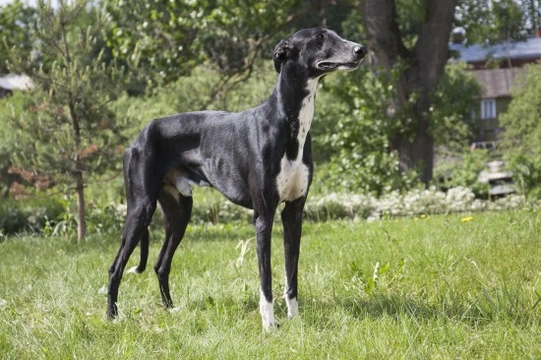
Prey Drive in Sight Hounds
Sight Hounds have been bred for hundreds of years to chase and kill small animals, so it is unfair that we as prospective owners suddenly expect them to abandon all that instinct and live side by side with a cat and some rabbits. Greyhounds, Whippets and even Italian Greyhounds have an extremely high prey drive, and it is important that you are aware of this before purchasing a puppy or dog. If you are considering owning one of these beautiful dogs, it is essential that you allow for this trait. If you have lots of small animals in the house already, a sight hound may not be for you. There are of course exceptions, but the risk is the life of the cat or small animal, and is therefore one that most owners are not willing to take.
Unlike herding breeds such as collies, sight hounds have been bred to chase and capture, not herd. Though the prey drive is high in both breeds, the herding dogs are far less likely to kill a cat or rabbit than sight hounds. There have been many examples of collies living contentedly in multi-pet households, as there have been with sight hounds, but it is also advised that they be kept as single pets. If you own the sight hound from a puppy, you have a better chance at socialising him with your cat or rabbit, but they should never be left alone unsupervised. Boredom or simple curiosity can be deadly for the cat or rabbit, and you must always be wary when leaving the two unattended.
Prey drive is usually referred to in the context of how easily it is trained out of a dog, or, conversely, how well it can be used to the human’s advantage. Greyhounds, for example, are bred to have a higher prey drive even if they are being bred as racers. Racing greyhounds will chase after a lure, so the prey drive must be fairly high in order for the Greyhound to be a successful racer. Other dogs with high prey drives, such as Huskies, are bred to decrease their natural prey drive, as it can be dangerous for other pets and even infants. There is no use for a high prey drive in a domesticated Husky, whereas domesticated and racing Greyhounds can make good use of it.
If you are considering introducing a sight hound to a multi-pet household, you must have a good understanding of what prey drive is, and how it affects your dog. You must be patient, and understand that what you are trying to train out of your dog has been bred into him for generations upon generations. The only times dog and cat relationships work anyway is when the dog is able to accept that he is not dominant over the cat. If you’ve got particularly feisty felines, this is actually an advantage, as an inquisitive Greyhound puppy will soon learn his place. You must gently discourage chasing from day one. It is very difficult to distinguish the difference between chasing for play and chasing to hunt, and the only sure way to find out could have disastrous consequences.
If your puppy immediately starts to chase the cat, be sure to introduce them only when the dog is on the lead. This will give you complete control, and will likely also make the cat feel much safer. Allow the cat to approach the dog, and keep the lead tight enough so that if he lunges, the cat can escape. If the puppy is still trying to chase the cat, introduce some toys to the mix. This is redirection training. You need to convince your dog that the toys available are far more fun and interesting than the cat it was wanting to chase. Try and do this every time the two are in the same room. Every time the dog tries to chase the cat, prevent it from happening and give him a sharp and stern ‘No.’ There’s no need to shout at your dog for being a dog, but you do need to be quite firm with puppies, especially where prey drive is concerned. Every time your puppy starts to chase, be sure to distract him with toys. Ask him to sit and stay, if he knows those commands, and reward him with a treat and praise.
It can take months for a sight hound to overcome his prey drive, but many can be perfectly happy to cohabit with a cat or other animal. You just need a great deal of patience for training, and a lot of supervision. Make sure you aren’t allowing him to exhibit prey drive behaviours in any other situations either, for example chasing a squirrel in a field. He won’t be able to differentiate the squirrel from the cat, so it is important that you have plenty of toys and treats at the ready even when you are out walking. Eventually, your sight hound will realise that the other animals are part of the family and not for eating. Be patient and consistent, and you’ll get there eventually!



